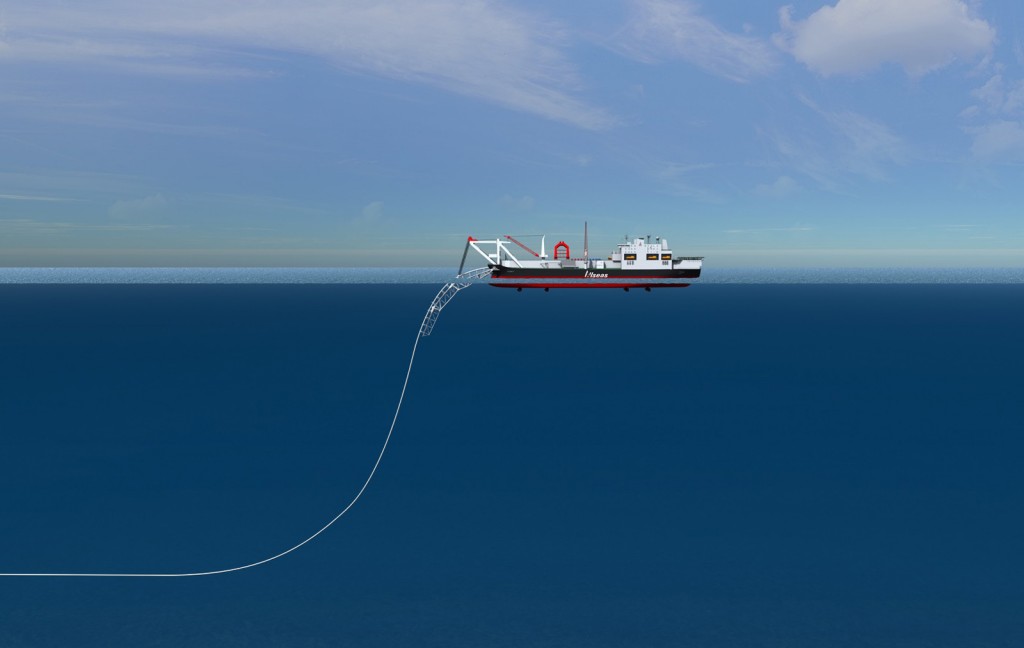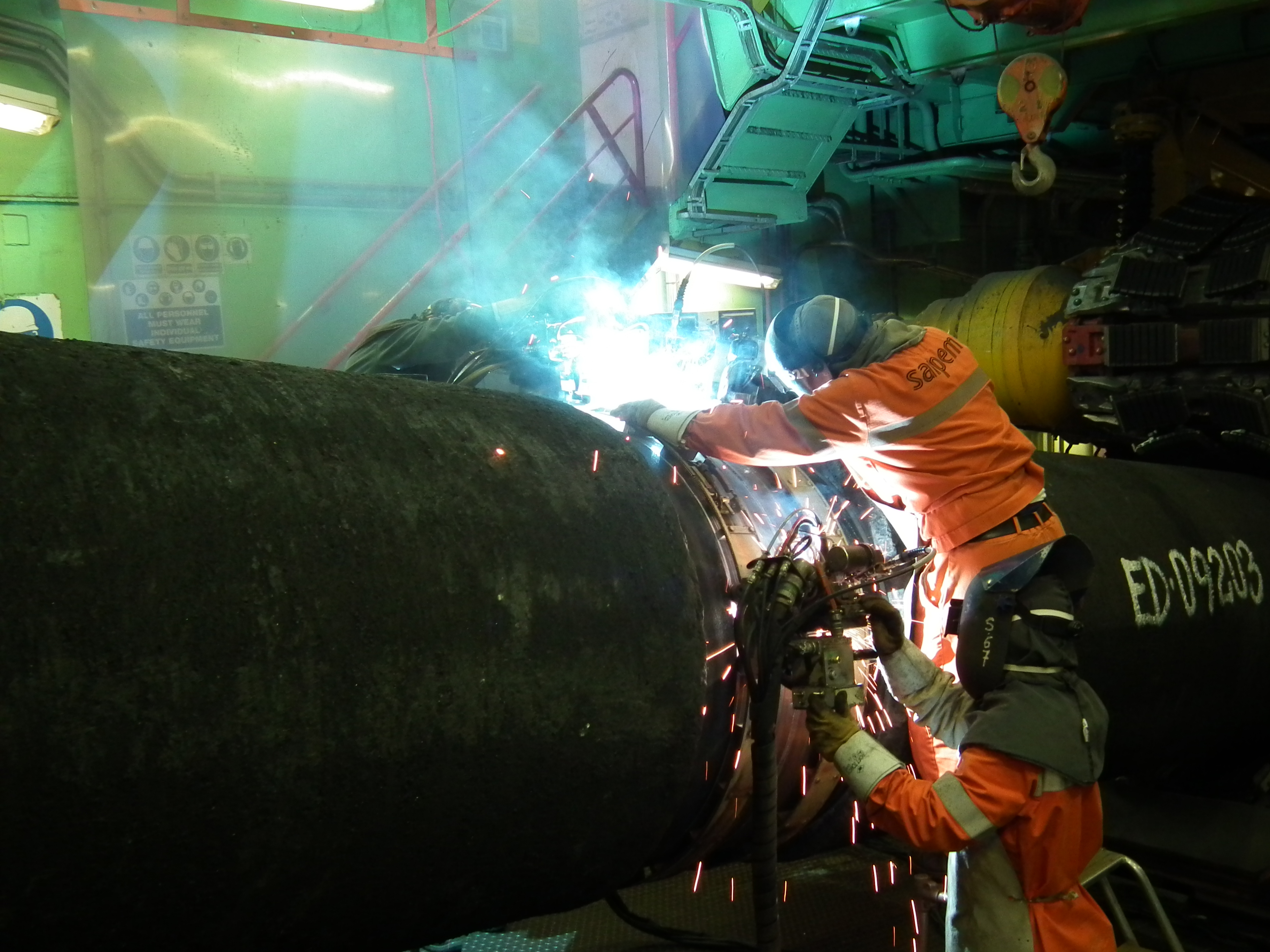When operating in a subsea environment with long subsea pipelines and risers, one of challenges is to keep up a sufficient production rate and the right amount of pressure to flow fluid from the wellheads to the production facilities. Due to this reason, multiphase pumps are widely used in subsea operations in order to overcome these issues.
![]()
Benefits of Multiphase Pumps
Multiphase pumps add hydraulic energy to production streams so produced fluid can be efficiently transported in the subsea pipelines. The benefits of multiphase pumps are as follows;
- Increase production rate in an existing export pipe-line
- Add extra energy to transport multiphase fluid and solids which may not be possible to efficiently flow in the pipelines.
- Reduce well-head flow pressure to increase oil and gas recover.
- Help produce hydrocarbon from marginal fields without installing new production facilities.
- Reduce cost of surface facility modification by installing the multiphase pumps on the seabed.
Main Issues of Multiphase Pumps
Some issues normally seen when using multiphase pumps are listed below;
- Change of flow conditions, fluid and solid content from the wellbore over the life of the well.
- Pump fluid with gas. Gas compressibility and thermodynamic behavior must be taken into account when designing multiphase pumps because this property can be drastically changed due to the operational condition of the pipeline.
- Operate with various fluid compositions. Over the production life, there are possibilities for the presence of sand production, scale & wax formation, as well as corrosive and toxic components (H2S and CO2). These issues can badly affect the efficiency of multiphase pumps.
Challenges of Subsea Multiphase Pump
Typically, a pump is designed to operation at or close to its optimum point so a pump can deliver fluid in the most efficient way. However, in oil and gas production, it is very difficult to specify an optimum condition for the pump because fluid production will change over a period of time due to the nature of reservoirs.
Multiphase pumps used in oil and gas industry must offer a broad operating envelope because of the uncertainty of the produced reservoir fluid. Typically, oil will flow at a high rate at the beginning of the well. When the well has been producing for a longer period of time, water and gas production will increase and sometimes sand production can be seen. In order to implement the required operating envelope, a variable speed drive is required. In some situations, changing out the anew multiphase mud may be planned after a certain period because it can be more economical than having a very large multiphase pump in the beginning.
Flow Fluctuations and Slugs
Flow fluctuations can occur at any time while producing the well. Medium and short-term fluctuations can also be seen under transient operations, for example well tests, well start-up or shut-down, pipeline pigging, etc., therefore, this will result in hydraulic instability in the pipelines. Furthermore, wells that produce multiphase fluid can lead to slug flow, which can cause an issue with a multiphase pump. The most effective method to manage slug is to use a liquid recycling process. The concept is to recycle liquid into a mixer located before a multiphase pump so that the gas liquid ratio will not fluctuate much.
Two types of multiphase pumps used in the oil and gas industry are twin-screw pumps and helicon-axis pumps.
Twin-Screw Pumps (Positive Displacement Pump)
A twin-screw pump is a double ended positive displacement pump with external gears and bearings and it is composed of two parallel helical screws engaging with each other. Helical channels formed by each screw are periodically obstructed by the other screw while they are rotating. The chambers move continuously along the axes when the screws rotate and the fluid is transferred from the suction side to the discharge side. Figure 1 shows the cut away of the pump.
![Figure 1 - General Configuration of a Twin Screw Pump]()
Figure 1 – General Configuration of a Twin Screw Pump
The theoretical volumetric flow rate of the twin-screw pump is controlled by the rotation speed, the size and pitch of the screws and the chamber volume. One shaft is directly coupled to the main drive and the second shaft is driven through a helical gear which transfers the torque and synchronizes rotation. The typical rotational speed of the screws is between 1,500 and 2,400 rpm.
A screw pump casing has an inlet capacity which can smooth out small gas slugs coming into a pump. However, if high volume gas slugs with average gas volume fraction higher than 95% enter into a pump, a pump cannot operate efficiently, Hence, an external liquid recycle system must be added. If a well produces sand, the inlet casing may also become a disadvantage because it can become a sand trap and feed screws with fluid that has a high sand content. Selecting a proper screw profile and a special hard coating for a pump will increase resistance to wear in the present of sand production.
Depending on the size of pumps, twin-screw pumps can cover total volumetric flow rates (oil, water and gas) at suction conditions from 10,000 bbl/day up to 300,000 bbl/day. Additionally, pumps can accept differential pressures of up to 1000 psi (70 bar).
The main advantages of twin-screw pumps are listed below;
- Low sensitivity to variations in Advantages of twin-screw pumpsflow conditions
- Suitable for high viscosity liquids and low suction pressure
- Relatively low rotational speed
- Pump capacity proportional to speed
Limitations of twin-screw pumps
The limitations of twin-screw pumps are as follows:
- Higher number of seals with limited shaft clearance
- Large size
- More suitable for land operation than offshore operation
- Shaft deflection under hydraulic load
This video below show how a twin-screw works.
Helico-axial Pumps (Centrifugal Displacement Pump)
Helico-axial Rotodynamic pumps are multiphase centrifugal pumps used in subsea pumping. Centrifugal pumps use a different concept of fluid transfer from positive displacement pumps. Centrifugal pumps continuously transfer energy from the prime mover to the fluid, however, positive displacement pumps impose displacement on a finite volume of fluid. During this process, mechanical work is firstly transferred to the fluid in a rotating part of the machine and then converted into pressure in a static part.
Typical centrifugal pumps do not work very well with multiphase fluid, especially with gas present in the fluid because pump performance will dramatically drop with a low percentage of gas (5-8%). A special pump concept, called “helicon-axial” is designed to overcome the present of gas in the fluid stream.
A multiphase helicon-axial pump is a multi-stage rotodynamic pump and each pump stage consists of an impeller, a static diffuser, and a rotating part mounted on a shaft. Figure 2 shows a drawing of a helico-axial pump.
![Figure 2 - Helico-axial pump]()
Figure 2 – Helico-axial pump
One important feature of this pump is that it has free open hydraulic channels which accommodate solid particles in the flow. When a helico-axial pump is operated, it must ensure that sand will not accumulate in the pump gaps between the casing and internal parts.
Advantages of Helico-axial Pumps
Advantages of helicon-axial pumps are listed below;
- Ability to pump fluid at any gas volume fraction from 100 % liquid to 93% gas
- More compact than a twin screw pump, therefore it is suitable for offshore operation
- Mechanical simplicity and reliability
- Self-adaptation to flow changes
- High possible pressure rise up to 2,200 psi and
References
Subsea Engineering Handbook by Bai, Yong Published by Gulf Professional Publishing 1st (first) edition (2012) Hardcover. Edition. Gulf Professional Publishing.
Andrew C. Palmer, 2008. Subsea Pipeline Engineering, 2nd Edition. 2 Edition. PennWell Corp.
Qiang Bai, 2014. Subsea Pipeline Design, Analysis, and Installation. 1 Edition. Gulf Professional Publishing.
Charles Sparks, 2007. Fundamentals of Marine Riser Mechanics: Basic Principles and Simplified Analysis. Edition. PennWell Corp.



















































.jpg?n=6181)











